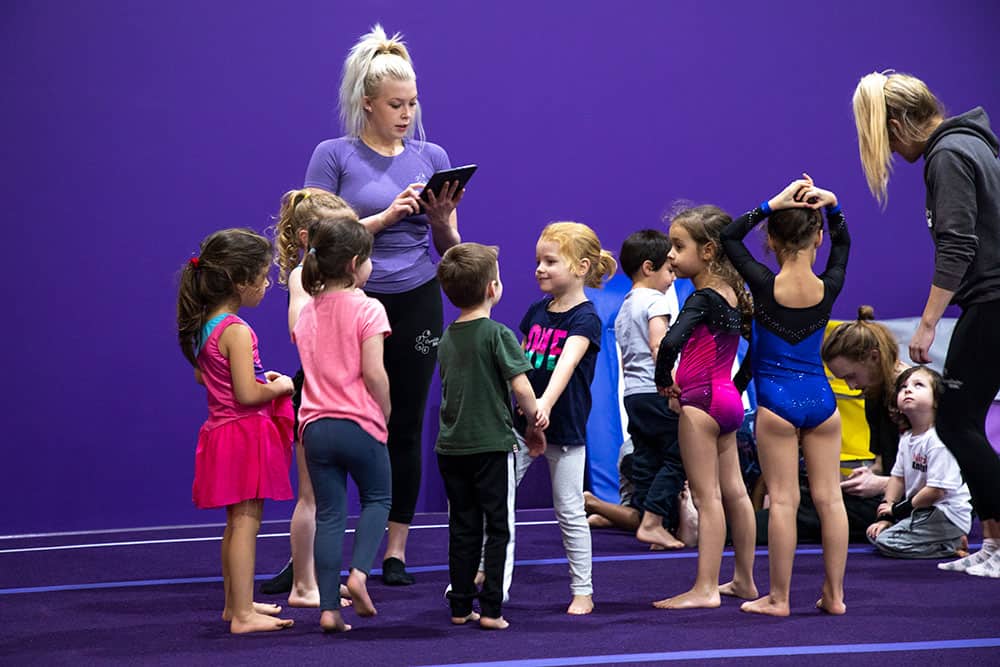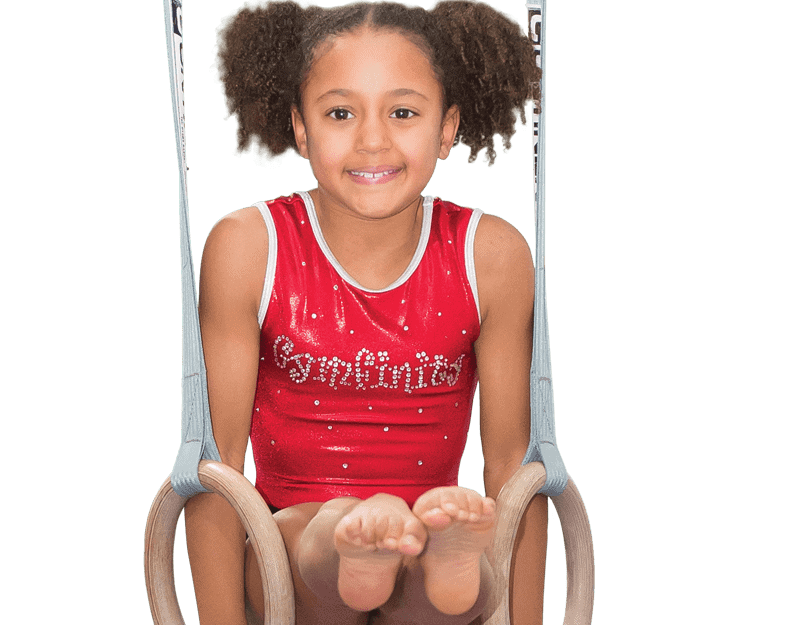6 min read
Last Updated on February 25, 2025
At Gymfinity Kids we do everything we can to protect the health, well-being and safety of the children who come to our clubs and nurseries. This involves using only the best equipment and having expert coaches and procedures in place to minimise injuries. During Child Safety Week we share our top tips for preventing injuries during exercise and ensuring that we’re all equipped to keep little ones (and the rest of the family) as safe as possible.
Warm-up!
It is absolutely critical to warm up before doing exercise, no matter what age you are. Diving straight into strenuous activity without first warming up your joints, and muscles and raising your heart rate can result in injury. Warming up doesn’t need to be complex though – before your next game of tennis, football in the garden or run around the park, think about doing these four exercises:
- 10 jumping jacks
- 5 arm circles or shoulder rolls
- 20 high knees
- 5 lunges (on each side)
- [Repeat all of this x 2]
Cool down!
Cooling down after exercise is just as important as warming up beforehand. It allows the body to return to its normal rhythm and stretch out muscles whilst they are still warm. Cooling down also has the added benefit of helping to relax and letting the mind and body recover. Some of our favourite cool-down exercises are:
- Cat stretch – on all fours take turns arching your back and then curving it the other way. Breathe in or out each time you change
- Reach – Reach up and touch the sky for 20 seconds then reach down and touch toes for 20 seconds
- Quad stretch – stand up and reaching behind you hold your left ankle with your right hand. Hold for 20 seconds then swap. If you lose balance try holding your ear with the opposite hand – it helps a lot!
Avoid specialising in a sport from a young age
For some children focusing on just one sport from a young age can lead to the risk of overuse injuries (particularly when bones and muscles are still developing) psychological stress (from a bit too much pressure) and burnout (if they lose the joy in exercising). One of the best things a child can do is…
Do a variety of activities
… a variety of exercises! Variety is not only a great way for children to figure out what they enjoy and what they’re good at, but it also helps to prevent injury by improving coordination and muscle control across the whole body. Participation in different types of physical activity can also avoid the overuse of any one muscle group, for example, gymnastics might put some strain on a child’s wrists whilst netball can be tougher on the ankles – it’s best to mix things up.
Create a Safe Environment for Exercise
One of the simplest ways to prevent injuries is by ensuring that your child is playing or exercising in a safe, well-maintained environment. Whether it’s at home, in the park, or at a Gymfinity Kids club, take a moment to check the surroundings for potential hazards like uneven surfaces, loose objects, or slippery floors. Investing in proper footwear and protective gear—such as supportive trainers or wrist guards for gymnastics—can also help reduce the risk of accidents.
Encourage Active Recovery Days
Rest is just as important as activity when it comes to keeping kids safe and injury-free. Encouraging active recovery days—where children engage in low-impact activities like swimming, stretching, or light yoga—can help prevent overuse injuries and give their muscles time to recover. This balance between activity and rest ensures long-term strength and resilience.
Teach the Importance of Listening to Their Bodies
Children should be encouraged to listen to their bodies and recognise when something doesn’t feel right. If they experience pain, fatigue, or discomfort, it’s important to take a break rather than push through. Teaching them the difference between normal muscle fatigue and potential injury will help them develop a healthy approach to exercise and self-care.
Keep Hydrated and Fuel the Body
Hydration and nutrition play a big role in preventing injuries and ensuring optimal performance. Make sure children drink plenty of water before, during, and after exercise to keep their muscles and joints functioning properly. A balanced diet rich in protein, healthy fats, and carbohydrates supports muscle recovery and provides the energy needed for physical activity.
Lead by Example
Children learn best by watching the behaviours of those around them. By demonstrating good habits, such as warming up, cooling down, staying hydrated, and resting when needed, parents and coaches can reinforce positive safety practices. Showing enthusiasm for exercise and making safety a natural part of every activity will encourage children to do the same!
Don’t force it!
Children are much more likely to get an injury if they lack confidence in the sport or activity they are participating in. It is of course important to encourage children to be resilient, but if it’s clear they aren’t enjoying an activity and have lost confidence it might be best to take a break or choose a new hobby.
And finally, if they do get an injury R.I.C.E it!
Treatment for a sports injury will depend on factors such as how severe the injury is and the part of the body that is affected. R.I.C.E is a good way to treat minor sports injuries, particularly swelling in the first 24-72 hours.
- Rest – stop moving and protect the injury from additional strain.
- Ice – To minimize swelling and pain, apply a cold pack or bag of ice to the injured area. Do not apply cold directly to the skin; wrap in a towel or cloth or apply over clothing. Ice injuries for 20 minutes three times per day.
- Compression – To further reduce swelling, compress the injury by wrapping it firmly, but not too tightly, in a bandage.
- Elevation – Make sure to keep the injured part of the body elevated as much as possible. Using pillows can help to make this comfortable.
See more information about treating sports injuries on the NHS website here. If an injury is more severe always seek medical attention as soon as possible.





